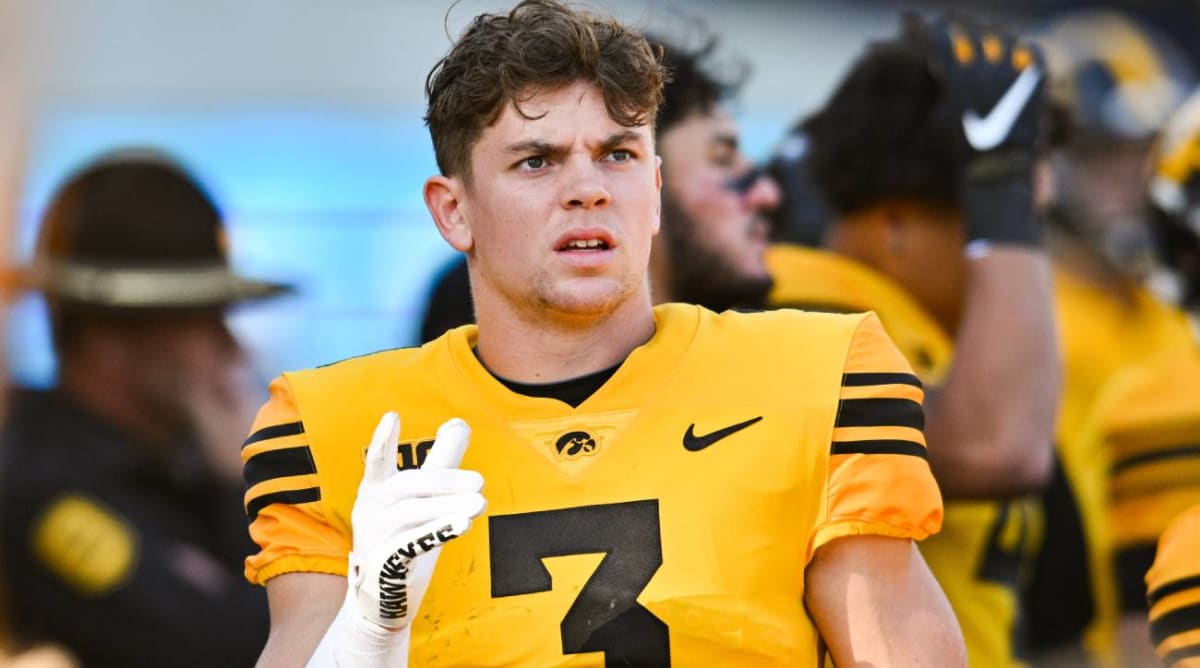No. 24 Iowa nearly pulled off a thrilling comeback victory against Minnesota on Saturday, but their celebration was cut short by a controversial call.
With just over a minute left to play and Iowa trailing 12–10, Hawkeyes returner Cooper DeJean fielded a punt, spun on the sideline, and broke free to the end zone. For a moment, it looked as though he had given Iowa a late 16–12 lead.
But upon review, the referees determined that the ball would instead be placed back at the spot that he received it, citing an “invalid fair catch” that DeJean had called.
The review and its result were confusing, and to fans outside of the state of Minnesota, somewhat frustrating.
Watching the replay again, DeJean can be seen waving his arm, but appears to be directing traffic for his teammates on the return team. Notably, his arm doesn't go anywhere near over his head, which would be necessary in order to call a fair catch.
Iowa returned a punt for a TD while down 12-10 vs Minnesota with 1:20 left in the 4th quarter
— FOX College Football (@CFBONFOX) October 22, 2023
After a review, the refs ruled the returner signaled a 'fair catch' and the touchdown did not count. Iowa lost the game. pic.twitter.com/SJFZ5WGjWY
According to the referees, DeJean’s hand motion was deemed an “invalid fair catch.”
Going by the NCAA rulebook, fair catches can be deemed either valid or invalid. A valid fair catch is the type of fair catch football fans are familiar with, signaled by a player “extending one hand only clearly above their head and waving that hand from side to side of their body more than once.”
An invalid fair catch can happen a few ways, but the key definition in this case is the first: "An invalid signal is any waving signal by a player of Team B that does not meet the requirements of [a valid fair catch]."

Jeffrey Becker/USA TODAY Sports
Basically, any sort of hand waving that is not over the head can be deemed by the referee as an invalid fair catch, and the result of an invalid fair catch is the same as with a valid one—the ball is placed at the spot of the catch.
The NBC rules analyst Reggie Smith broke down the call for viewers at home.
“With his left hand, he begins giving the ‘get away’ signal,” Smith said. “This constitutes an invalid fair catch signal. It’s not a penalty, but the ball becomes dead at the spot of the recovery. Proper ruling and replay.”
Reggie Smith breaks down the ruling that called back an Iowa punt return touchdown. pic.twitter.com/eknp29L3Ok
— NBC Sports (@NBCSports) October 21, 2023
After the game, the referee who made the call explained the same thinking that Smith offered on the broadcast.
Just listened to @ScottDochterman’s interview with the Iowa-Minnesota referee. He said any waving of the arm, even in conjunction with pointing at the ball, constitutes an invalid fair catch signal, and the play is dead. He said the play is also reviewable.
— Adam Rittenberg (@ESPNRittenberg) October 22, 2023
There is still a bit of wiggle room to complain about the call. It feels a bit ticky-tack, and “any waving of the arm” feels pretty broad when applied to a football player who will likely be using his arms to run and later, catch the ball that is coming his way.
But for anyone wondering about the rationale behind the decision to call the touchdown back, Smith's explanation and a peak at the rulebook offers at least a small amount of closure.







